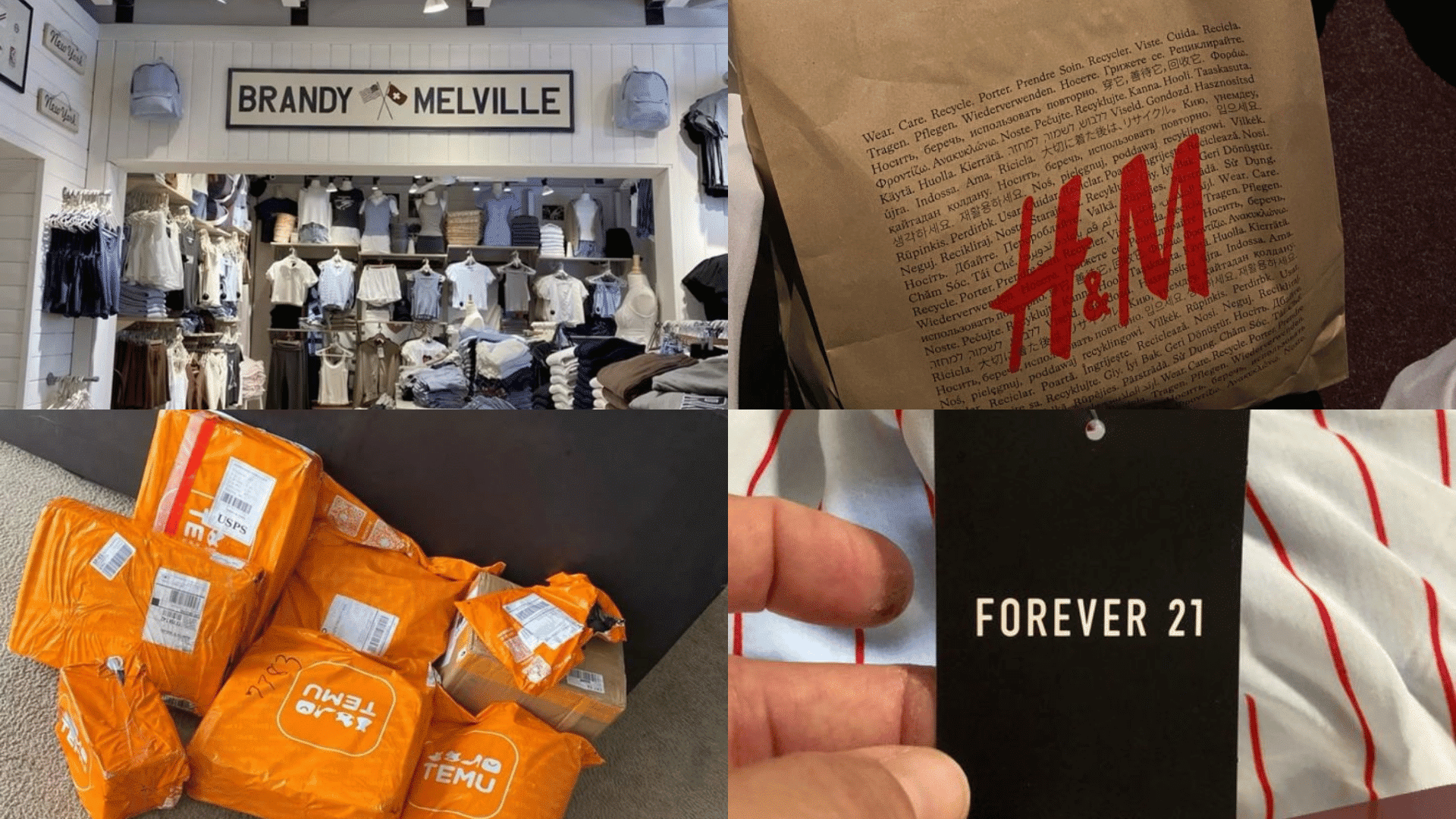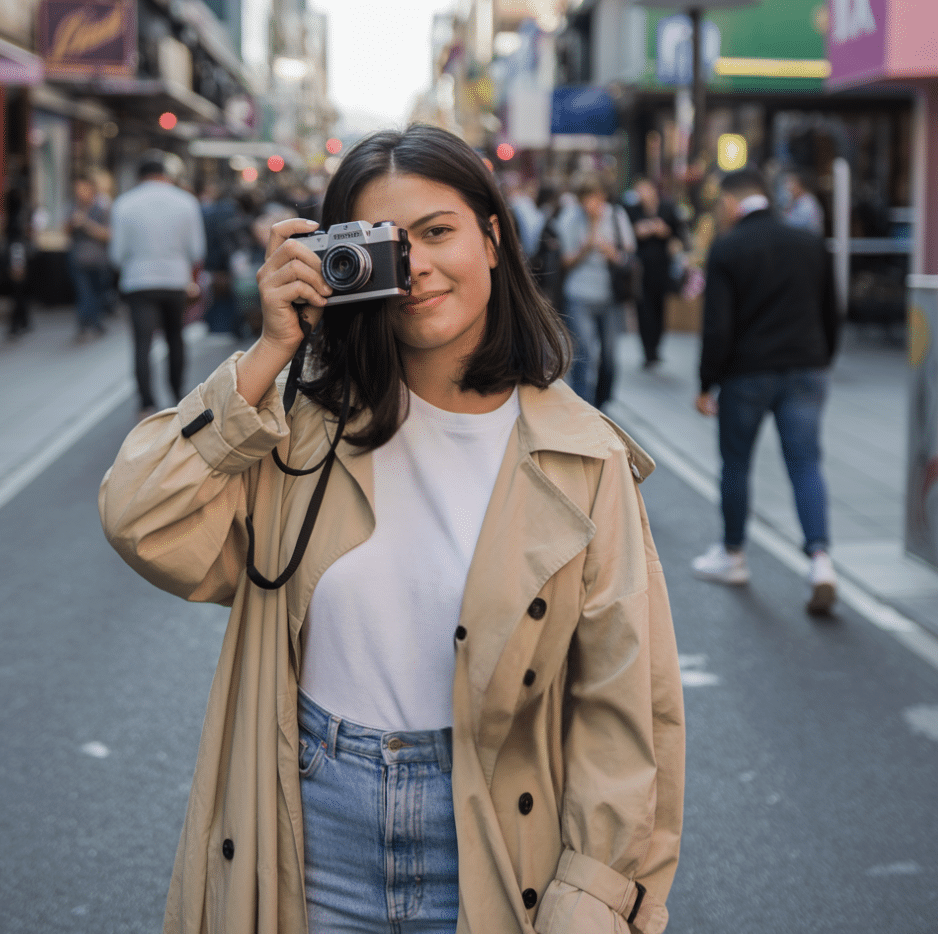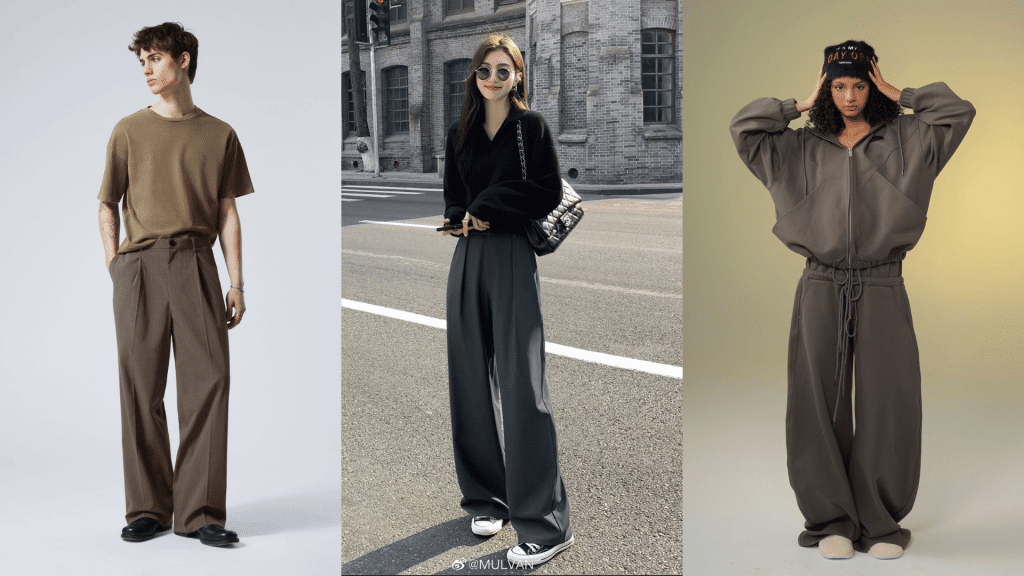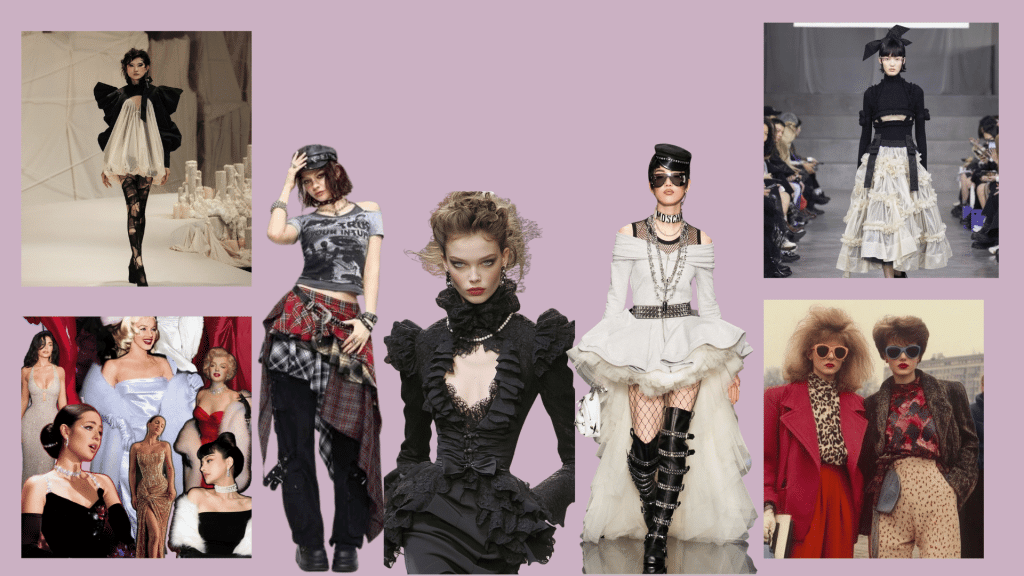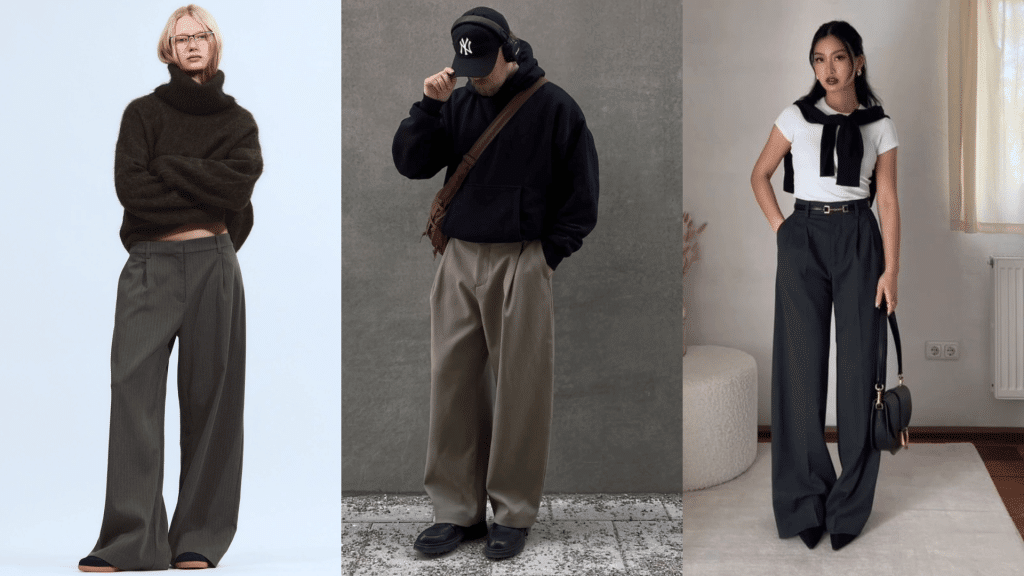Are you unknowingly supporting brands that exploit workers and destroy the environment with every clothing purchase in these fast fashion stores?
The shocking truth about fast fashion reveals that many popular retailers hide dangerous practices behind their affordable price tags.
Major fast fashion companies like SHEIN, H&M, Zara, Forever 21, and Boohoo have been exposed as some of the worst offenders in the industry.
Understanding these problematic brands empowers shoppers to choose alternatives that align with their values, creating positive change in the fashion industry while building a more sustainable wardrobe for the future.
Disclaimer: This blog raises awareness about fast fashion using public information and is not meant to disparage any brand.
What’s the Hidden Truth Behind Fast Fashion?
Fast fashion represents a business model where retailers rapidly produce trendy clothing at extremely low prices.
Fast fashion companies reduce costs by utilizing inexpensive synthetic materials, exploiting workers in developing countries, and prioritizing speed over quality.
Clothes are designed to fall apart quickly, ensuring frequent returns from customers.
The environmental impact proves devastating. The industry generates millions of tons of textile waste annually while consuming enormous amounts of water and toxic dyes.
The Drastic Impact of Fast Fashion
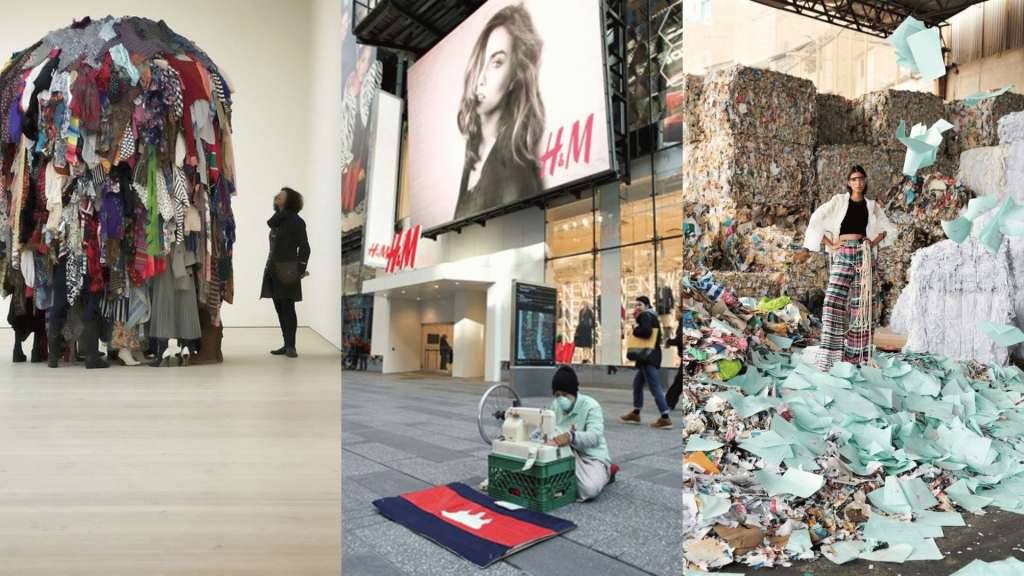
Fast fashion has far-reaching impacts that extend beyond personal style. As consumers become aware of the hidden costs to workers, communities, and the environment, it’s crucial to identify brands to avoid.
1. Environmental Impacts
The fashion industry is a significant contributor to pollution, generating waste, chemicals, and excessive water usage that harm ecosystems worldwide. Its production leaves lasting scars on communities and the planet.
- Over 92 million tons of textile waste are produced annually.
- Water pollution from toxic dyes and chemicals.
- Massive water consumption in manufacturing.
2. Social & Labor Impacts
Behind the cheap prices are workers facing unsafe conditions and exploitative wages, often with no protections. Many fast fashion factories also rely on child labor, highlighting the human cost of disposable clothing.
- Workers face unsafe conditions and poverty wages.
- Reports of child labor in supply chains.
- Exploitation remains widespread in production hubs.
3. Economic Impacts
Fast fashion weakens traditional industries by undercutting local craftspeople and small manufacturers. It also fosters a throwaway culture, leaving economies reliant on mass production rather than quality and skill.
- Traditional crafts and local industries struggle to compete.
- Promotes a throwaway culture that devalues quality and durability.
4. Health Impacts
From toxic dyes to chemical residues, fast fashion carries hidden health risks for both workers and shoppers. Factories expose employees to harsh environments, while consumers unknowingly wear harmful substances.
- Clothes may contain residues of formaldehyde, lead, and toxins.
- Workers suffer respiratory issues and skin conditions from chemical exposure.
The widespread impacts of fast fashion show why consumers must reconsider their shopping habits and prioritize ethical alternatives.
Red Flags to Spot Fast Fashion
To determine which fast fashion brands to avoid, consumers can identify problematic retailers by recognizing specific warning signs that indicate unethical practices. Here’s how you can do that:
- Extremely low prices: When a dress costs less, the true costs are being hidden somewhere in the supply chain
- Weekly new arrivals: Fast fashion stores constantly release new collections, creating artificial urgency to buy
- Poor quality materials: Clothes made primarily from cheap synthetic fabrics like polyester that feel thin
- No supply chain information: They typically hide details about where and how their clothes are made
- Vague sustainability claims: Using terms like eco-friendly without specific certifications or proof
- Constant sales and promotions: Always advertising discounts to encourage impulse purchases
- Fast shipping promises: Advertising delivery in just days, indicating unsustainable production speeds
Fast Fashion Brands to Avoid
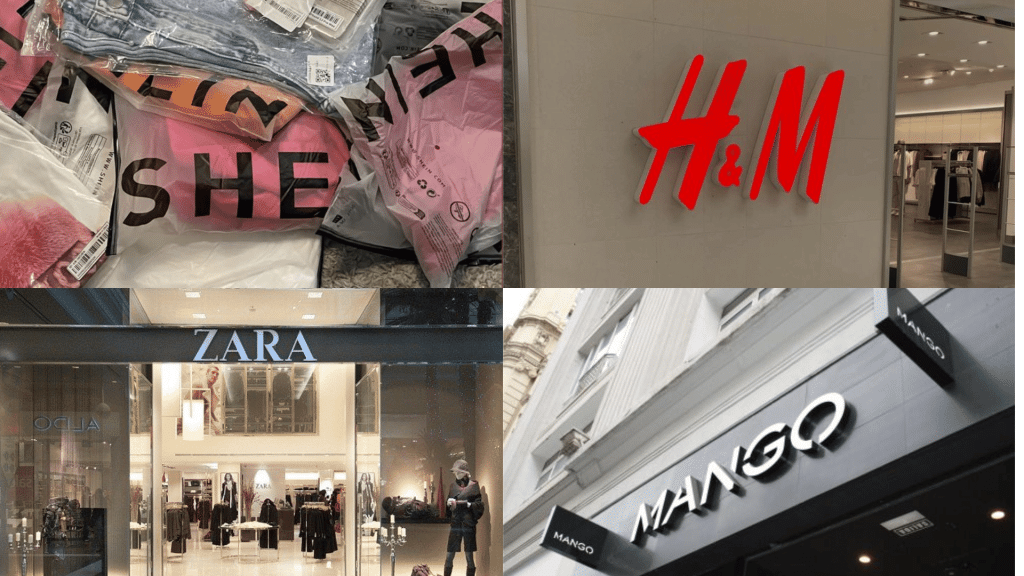
These online-first brands produce thousands of styles rapidly, often neglecting sustainability and transparency.
Their low prices and flashy marketing attract shoppers, but the real cost is the disposable fashion and hidden labor practices.
1. Shein
Shein is one of the largest fast fashion companies, churning out thousands of new items daily at ultra-low prices, which fuels overconsumption. Critics highlight unsafe working conditions, heavy reliance on synthetics, and virtually no transparency.
- Key Concerns: Unsafe working conditions, heavy waste, zero transparency
- Marketing Strategy: TikTok hauls, influencer campaigns, daily drops
- Quality Check: Inconsistent sizing, fabrics wear out quickly
2. Temu
Temu offers shockingly affordable products with limited transparency regarding sourcing. Its ultra-fast model encourages overconsumption at an unsustainable pace.
- Key Concerns: Questionable supply chains, overconsumption model
- Marketing Strategy: App-based flash sales and aggressive online ads
- Quality Check: Flimsy products, low durability
3. Romwe
Romwe, often compared to Shein, floods the market with ultra-cheap clothing. It has been criticized for its poor labor transparency and short lifespan of clothing.
- Key Concerns: Disposable clothing, labor transparency issues
- Marketing Strategy: Gen Z focus, cheap pricing, trend overload
- Quality Check: Poor fabrics, inconsistent fits
4. Zaful
Zaful markets trendy, affordable clothing online, producing styles at lightning speed. Its lack of transparency and reliance on synthetics place it squarely in the fast fashion category.
- Key Concerns: Synthetic-heavy, limited accountability
- Marketing Strategy: Influencer partnerships and heavy online ads
- Quality Check: Clothes rarely last beyond a few wears
5. YesStyle
YesStyle ships massive volumes of inexpensive, trend-driven clothing worldwide. Despite its popularity, the brand struggles with the transparency and sustainability of its fabrics.
- Key Concerns: Low transparency, overreliance on synthetics
- Marketing Strategy: K-fashion aesthetic, affordable online catalog
- Quality Check: Trendy but flimsy with uneven sizing
6. Fashion Nova
Fashion Nova flourishes on influencer marketing and ultra-fast turnaround times. Reports have linked the brand to sweatshop-like conditions and unsustainable mass production.
- Key Concerns: Sweatshop-like conditions, short-lived designs
- Marketing Strategy: Celebrity collabs, Instagram-first approach
- Quality Check: Stretch fabrics lose shape quickly
7. PrettyLittleThing
PrettyLittleThing is synonymous with cheap, influencer-driven clothing. The Boohoo-owned brand has been heavily criticized for exploitative labor and disposable designs.
- Key Concerns: Worker exploitation, low pay, disposable fashion
- Marketing Strategy: Celebrity endorsements and influencer collabs
- Quality Check: Low-quality stitching, not built to last
8. Missguided
Missguided relies on constant drops and heavy discounts to keep shoppers hooked. It has been called out for labor scandals and greenwashing attempts.
- Key Concerns: Greenwashing attempts, labor issues, and overproduction
- Marketing Strategy: Sales-driven, celeb partnerships, constant ads
- Quality Check: Trendy but fragile clothing
9. Boohoo
Boohoo has been investigated for poor labor conditions and underpaying workers. Its endless trend cycles make it a major contributor to fast fashion’s problems.
- Key Concerns: Unsafe factories, worker exploitation
- Marketing Strategy: Flash sales, influencer campaigns, bold marketing
- Quality Check: Items often fall apart quickly
10. Nasty Gal
Nasty Gal pushes out edgy, affordable styles that appeal to younger shoppers. Despite rebranding efforts, it continues to be criticized for overproduction and weak durability.
- Key Concerns: Overproduction, synthetic-heavy, poor durability
- Marketing Strategy: Edgy, youth-focused, social media-driven
- Quality Check: Cute designs but short lifespan
11. Zara
Zara’s rapid trend cycles and huge product range define the fast fashion model. While it promotes eco lines, critics call much of this greenwashing as production remains unsustainable.
- Key Concerns: Greenwashing, excessive production
- Marketing Strategy: Trend-led collections inspired by luxury fashion
- Quality Check: Some basics hold up, trendy pieces wear fast
12. H&M
H&M is one of the largest fast fashion companies, producing clothing on a massive scale. Its “Conscious” line is often accused of greenwashing, while worker rights remain a major issue.
- Key Concerns: Underpaid workers, polyester reliance, greenwashing
- Marketing Strategy: “Conscious” line, global reach, celebrity collabs
- Quality Check: Styles lose shape after a few washes
13. Mango
Mango promotes select “eco” collections while continuing to mass-produce trend-led pieces. Critics point to polyester-heavy ranges and limited progress on living wages across suppliers. The overall model still reflects the fast fashion scale.
- Key Concerns: Greenwashing claims, synthetic reliance, and weak wage progress
- Marketing Strategy: Runway-inspired, affordable chic released frequently
- Quality Check: Tailored items can fare better; trend pieces often don’t
14. Primark
Primark’s ultra-low prices encourage bulk buying and rapid disposal. Despite recycling initiatives, its production volume and supplier concerns keep it on the avoid lists. The low price point often mirrors low durability.
- Key Concerns: Labor concerns and unsustainable output
- Marketing Strategy: Huge stores, rock-bottom pricing, constant turnover
- Quality Check: Very limited longevity after repeated wear/wash
15. Forever 21
Forever 21 built its name on fast-moving, inexpensive trends that date quickly. Financial troubles underscored the fragility of the model, while sustainability and labor issues persist. Most pieces prioritize price over lifespan.
- Key Concerns: Worker exploitation concerns, overproduction, and bankruptcy history.
- Marketing Strategy: Youth-first trends and endless “new arrivals”
- Quality Check: Thin fabrics, visible wear within a season.
16. Pull & Bear
Pull & Bear, part of Inditex, promotes casual, youth styles quickly. Limited supply-chain transparency and frequent drops align with fast fashion, sacrificing fabric quality and finish for affordability.
- Key Concerns: High churn, vague eco claims, low transparency
- Marketing Strategy: Gen Z casualwear with rapid refreshes
- Quality Check: Inconsistent fits, fast-wear fabrics
17. Stradivarius
Stradivarius targets younger shoppers with feminine, Instagram-friendly looks. The pace of newness and reliance on synthetics raise sustainability questions despite marketing polish. Most pieces skew trend-over-quality.
- Key Concerns: Overproduction and polyester-heavy designs
- Marketing Strategy: Social-first styling and quick seasonal shifts
- Quality Check: Cute designs, modest durability
18. Bershka
Bershka focuses on youth streetwear, regularly launching capsules and collaborations. Critics point out mass production and limited ethical or environmental progress. Items are trendy but age and wear rapidly.
- Key Concerns: Scale-driven output, weak sustainability depth
- Marketing Strategy: Street-inspired drops, influencer alignment
- Quality Check: Trendy silhouettes, short lifecycle
19. Cotton On
Cotton On’s global basics are priced to move, fueling volume over longevity. Reports have flagged labor oversight gaps and sustainability shortcomings. Quality varies widely by line and material.
- Key Concerns: Labor concerns, overproduction, mixed accountability
- Marketing Strategy: Affordable basics, constant promos
- Quality Check: Everyday wear with a limited lifespan.
20. Hollister
Hollister’s California-casual image fronts fast, teen-focused releases. Synthetic-heavy fabrics and mass output place it on many avoid lists. Styles turn over quickly, as does garment condition.
- Key Concerns: Unsustainable scale, synthetic reliance
- Marketing Strategy: Lifestyle branding, youth-centric trends
- Quality Check: Basics degrade fast, especially knits
21. Aeropostale
Aeropostale courts teens with low-cost graphic tees and basics. Sustainability and quality often take a back seat to frequent promos and trend cycles. Many garments feel disposable after a semester.
- Key Concerns: Overconsumption driver, low-quality materials
- Marketing Strategy: Deep discounts, constant new graphics
- Quality Check: Quick fading and shape loss
22. Brandy Melville
Brandy Melville’s “one size” approach excludes many shoppers and simplifies production. Transparency remains limited, and quality tends to match the low price. Social cachet does not equate to durability.
- Key Concerns: Exclusionary sizing, weak sustainability, and opacity
- Marketing Strategy: Minimalist aesthetic, influencer-driven “cool”
- Quality Check: Basics stretch out and wear down quickly
23. PacSun
PacSun relies on trend-led, California-inspired drops that flip fast. Sustainability reporting lags the pace of releases, and quality varies. Most items favor looks over longevity.
- Key Concerns: Disposable trend cycles, limited transparency
- Marketing Strategy: Youth culture collabs and seasonal capsules
- Quality Check: Fun styles, modest durability
24. Charlotte Russe
Charlotte Russe pushes ultra-affordable, on-trend womenswear with frequent resets. Environmental and labor accountability are not strengths, and the budget is skewed by fabrics. Pieces often feel single-season.
- Key Concerns: Overproduction, low-quality textiles
- Marketing Strategy: Heavy discounts and mall-based trend churn
- Quality Check: Fragile construction, short wear life
25. River Island
River Island is known for its affordable, fashion-forward designs that switch rapidly each season. While it has a loyal following, critics point to disposable cycles and lack of real sustainability progress. Clothes often look dated quickly.
- Key Concerns: Disposable designs, poor transparency
- Marketing Strategy: Constant seasonal updates and youth appeal
- Quality Check: Trendy but not durable
26. Gap
Gap has built its reputation on basics, but its production scale and supply chain problems put it on fast fashion lists. Efforts toward sustainability haven’t kept pace with its output. Some denim is decent, but most items age quickly.
- Key Concerns: Supply chain issues, mass unsustainable production
- Marketing Strategy: Affordable family basics and seasonal promos
- Quality Check: Jeans fare better; tees and knits lose shape
27. Old Navy
Old Navy offers trendy casual wear at very low prices, driving overconsumption. Despite eco-marketing efforts, the brand continues to operate on a fast turnover model. Garments often fail to withstand repeated use.
- Key Concerns: Overproduction and reliance on synthetics
- Marketing Strategy: Budget-friendly, family-focused positioning
- Quality Check: Low prices often equate to low durability
28. Uniqlo
Uniqlo sells minimalist “lifewear,” but allegations of labor violations and vague sustainability claims have flagged it. While basics can feel higher quality, the scale of production undermines ethical goals.
- Key Concerns: Labor exploitation claims, greenwashing
- Marketing Strategy: simple products marketed as timeless staples
- Quality Check: Basics last longer; trendy items less so
29. American Eagle Outfitters
American Eagle combines basics and denim with frequent trend updates. Despite some eco-initiatives, mass output and synthetic reliance make it part of fast fashion. Jeans are better than most of its apparel.
- Key Concerns: Mass production, sustainability gaps
- Marketing Strategy: Denim-first branding with youth appeal
- Quality Check: Jeans are durable; tops and knits wear quickly
30. United Colors of Benetton
Benetton’s bold marketing campaigns overshadow its weak sustainability performance. It still runs on a fast fashion cycle, with mass production and low labor costs. Clothing often feels outdated within a year.
- Key Concerns: Poor worker progress, unsustainable volume
- Marketing Strategy: Global image tied to activism-style ads
- Quality Check: Fabrics are inconsistent, and lifespan is limited
31. J.Crew Factory
J.Crew Factory sells cheaper versions of J.Crew designs but relies on bulk production and trends. The line cuts corners on materials, leaving many items short-lived.
- Key Concerns: Volume-heavy, trend-focused output
- Marketing Strategy: Discount-driven outlet branding
- Quality Check: Cheaper fabrics than mainline J.Crew
32. Urban Outfitters
Urban Outfitters markets itself as alternative and nostalgic, but mass output and cultural appropriation controversies tarnish its image. Many pieces feel overpriced for the quality delivered.
- Key Concerns: Overproduction and cultural appropriation
- Marketing Strategy: Nostalgic branding, curated youth culture
- Quality Check: Trendy styles, inconsistent durability
33. Anthropologie
Anthropologie projects an upscale boho image but is tied to parent company URBN’s fast fashion model. Greenwashing accusations persist, and quality often doesn’t match high price tags.
- Key Concerns: Greenwashing, ties to fast fashion practices
- Marketing Strategy: Boho-chic aspirational lifestyle branding
- Quality Check: Stylish, but overpriced for durability
34. Motel Rocks
Motel Rocks pushes edgy, statement pieces marketed heavily on social media. Its frequent new drops and reliance on synthetic fabrics make it another fast fashion player. Quality often feels short-term.
- Key Concerns: Trend-driven, unsustainable fabrics
- Marketing Strategy: Edgy, influencer-heavy branding
- Quality Check: Statement styles, not built to last
35. Misspap
Misspap, owned by Boohoo Group, flourishes on celebrity collabs and constant trend churn. Reports of worker exploitation and disposable clothing haunt its reputation. Garments rarely stand up to repeated wear.
- Key Concerns: Worker exploitation, low transparency
- Marketing Strategy: Influencer collabs and bold promotions
- Quality Check: Trendy looks with poor durability
36. Victoria’s Secret
Victoria’s Secret has long been criticized for overproduction and synthetic-heavy lingerie. Despite rebranding efforts, sustainability and inclusivity remain issues. Quality often fails to justify the premium pricing.
- Key Concerns: Wasteful production, poor transparency
- Marketing Strategy: Glamorous fashion shows and model branding.
- Quality Check: Inconsistent quality, overpriced for durability
37. Hot Topic
Hot Topic capitalizes on fandom and subculture fashion with cheap, themed clothing. Rapid production and poor transparency keep it flagged as fast fashion. Items are fun but not built for longevity.
- Key Concerns: Disposable pop-culture apparel
- Marketing Strategy: Fandom-driven youth appeal
- Quality Check: Playful styles, weak durability
38. Express
Express balances workwear and party wear but releases trends at a high pace. Despite some sustainable claims, its scale and turnover keep it in fast fashion territory. Garments rarely last beyond a few seasons.
- Key Concerns: Unsustainable volume, vague eco claims
- Marketing Strategy: Affordable workwear and trendy staples
- Quality Check: Pieces often wear out quickly
39. New Chic
New Chic is an online retailer known for its ultra-cheap clothing. It faces major criticism for a lack of accountability in supply chains and poor-quality materials. Products are typically single-use fashion.
- Key Concerns: Cheap textiles, no transparency
- Marketing Strategy: Online bargain sales with large catalogs
- Quality Check: Very poor durability
40. Jack Wills
Jack Wills markets itself as “preppy British heritage,” but behind the branding lies fast production. Its reliance on cheaper fabrics and mass scale puts it squarely in the fast fashion space.
- Key Concerns: Mass-produced, low accountability
- Marketing Strategy: Heritage branding with youth appeal
- Quality Check: Looks polished but lacks lasting quality
41. River Island
River Island produces frequent new collections with little transparency. It remains criticized for its disposable approach to fashion. Many pieces age fast in both trend and quality.
- Key Concerns: Trend-heavy and short lifecycle
- Marketing Strategy: Affordable, fashion-forward updates
- Quality Check: Styles date quickly, fabrics wear fast
42. American Eagle Outfitters
American Eagle promotes denim and basics but still follows a mass-production model. Despite eco-marketing, its scale drives overconsumption. Denim fares better than most other apparel.
- Key Concerns: Unsustainable output, synthetic fabrics
- Marketing Strategy: Youthful all-American branding
- Quality Check: Jeans hold up, tops lose shape
43. PacSun
PacSun booms on surf and skate-inspired apparel designed for teens. Its constant new drops and lack of transparency make it unsustainable. Most garments favor aesthetic over durability.
- Key Concerns: Overproduction and limited sustainability reporting
- Marketing Strategy: California-inspired youth culture
- Quality Check: Fun styles but not built to last
Sustainable Alternatives to Fast Fashion Brands
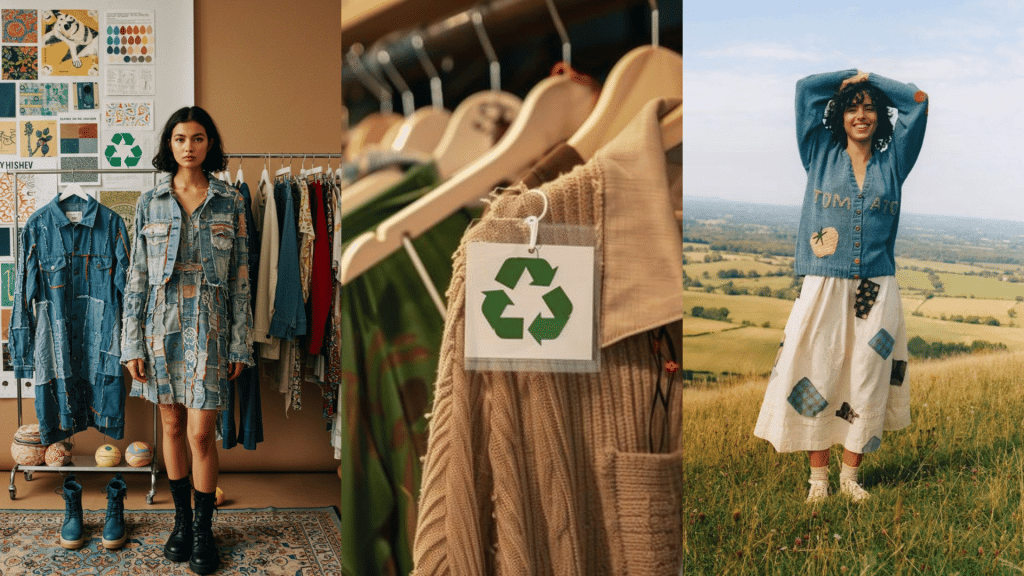
The fashion industry doesn’t have to rely on harmful practices to deliver style and affordability. Consumers can make ethical choices that support sustainable practices while still enjoying fashionable clothing.
Sustainable Alternatives to Fast Fashion Brands
- Thrift Shopping: Buy pre-owned clothes from thrift stores or apps like Poshmark to find unique pieces at low prices while helping the environment.
- Slow Fashion Brands: Choose ethical companies like Patagonia that make high-quality clothes designed to last years, not just one season.
- Local Businesses: Support small, local clothing makers who often use better materials and treat workers fairly.
- Clothing Swaps: Trade clothes with friends or rent special outfits instead of buying new items you’ll rarely wear.
- DIY Projects: Learn basic sewing to fix, alter, or transform old clothes into new styles.
Every purchase becomes a vote for the kind of fashion industry we want to see in the future.
Conclusion
The devastating impacts of fast fashion reveal why consumers must make more conscious shopping decisions.
The true cost of cheap clothing extends far beyond the price tag, affecting communities and ecosystems worldwide.
Consumers hold the power to drive change by supporting ethical alternatives, shopping secondhand, and choosing quality over quantity.
Every purchase decision matters in creating a more sustainable and fair fashion industry so learn which fast fashion brands to avoid now.
Take action today by researching brands before buying and choosing retailers that align with your values for a better future.

